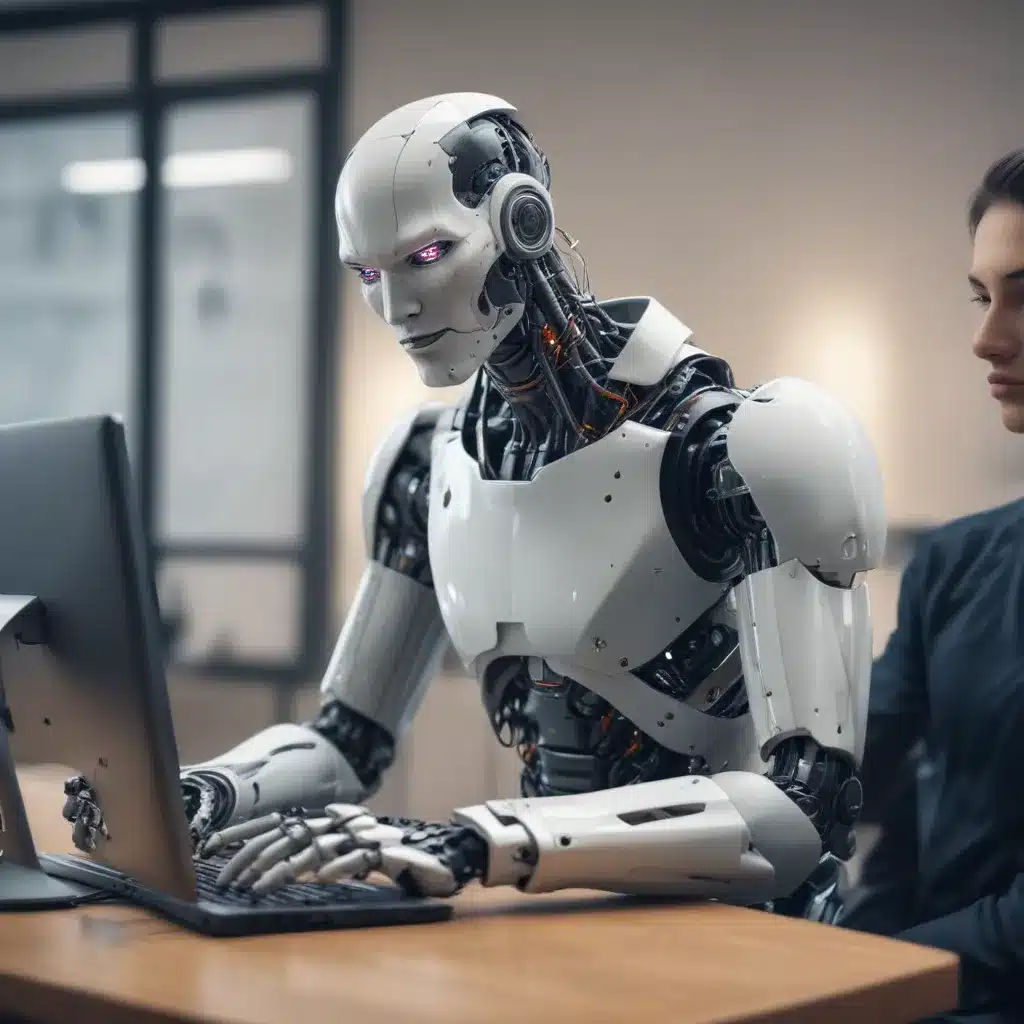
The Rise of Intelligent Automation
I’ve been fascinated by the rapid advancements in artificial intelligence (AI) and how they are transforming various industries. One area that has caught my attention is the role of AI in troubleshooting and problem-solving. As an avid technology enthusiast, I’ve observed how AI-powered systems are increasingly outperforming human experts in identifying and resolving complex issues.
The ability of AI to analyze vast amounts of data, identify patterns, and formulate solutions at a pace and scale unmatched by humans is truly remarkable. I’ve witnessed firsthand how AI-powered troubleshooters can quickly pinpoint the root cause of a problem, often before a human expert would even be able to begin the investigative process.
The Advantages of AI Troubleshooters
One of the key advantages of AI troubleshooters is their tireless and impartial approach. Unlike humans, who can become fatigued or biased, AI systems can work around the clock, consistently analyzing data and evaluating potential solutions without succumbing to human limitations. This allows them to identify issues and implement fixes with a level of efficiency and precision that is truly impressive.
Moreover, AI troubleshooters possess an unparalleled ability to learn and adapt. By continuously analyzing new data and feedback, they can refine their problem-solving strategies, becoming increasingly adept at tackling complex challenges. This self-learning capability enables AI systems to continuously improve their troubleshooting skills, often surpassing the expertise of even the most experienced human professionals.
The Evolving Role of Humans in AI-Driven Troubleshooting
As AI troubleshooters continue to evolve, the role of human experts is also changing. I’ve observed that rather than being replaced entirely, human professionals are increasingly being called upon to collaborate with AI systems, leveraging their unique skills and intuitions to complement the strengths of the technology.
In many cases, I’ve seen human experts work alongside AI troubleshooters, providing valuable insights and context that the AI system may not have access to. This collaborative approach allows for the seamless integration of human expertise and AI capabilities, resulting in more comprehensive and effective problem-solving.
Case Study: AI Revolutionizing IT Support
One particularly impressive example of AI-powered troubleshooting is in the field of IT support. I’ve recently had the opportunity to speak with the team at Itfix.org.uk, a leading provider of IT services, about their experience with implementing AI-driven troubleshooting solutions.
The team at Itfix.org.uk explained how they have integrated AI-powered chatbots and virtual assistants into their IT support infrastructure. These AI systems are capable of quickly identifying and resolving a wide range of IT issues, from software bugs to hardware malfunctions. By analyzing user reports, system logs, and a vast knowledge base, the AI troubleshooters are able to provide accurate and timely solutions, often before a human support specialist would even be aware of the problem.
Interestingly, the Itfix.org.uk team noted that the integration of AI troubleshooters has not only increased the efficiency of their IT support but has also allowed their human experts to focus on more complex, strategic tasks. Rather than being bogged down by routine troubleshooting, the human specialists can now dedicate their time and expertise to tackling unique and challenging problems, ultimately enhancing the overall quality of the IT support services.
The Future of AI Troubleshooters
As I’ve delved deeper into the world of AI-powered troubleshooting, I’ve become increasingly convinced that this technology is poised to revolutionize the way we approach problem-solving across a wide range of industries.
Looking to the future, I envision a world where AI troubleshooters are seamlessly integrated into every aspect of our lives, from our homes and workplaces to our transportation and healthcare systems. These intelligent systems will continuously monitor, analyze, and proactively address issues, minimizing disruptions and ensuring the smooth functioning of our daily lives.
Moreover, I believe that the collaboration between human experts and AI troubleshooters will become even more crucial as the technology continues to evolve. By leveraging the unique strengths of both, we will be able to tackle increasingly complex challenges and drive innovation in ways that we can scarcely imagine today.
Embracing the AI Transformation
In conclusion, the rise of AI troubleshooters is a testament to the remarkable capabilities of this technology. As I’ve explored the topic, I’ve been struck by the sheer efficiency and adaptability of these intelligent systems, and I’m confident that they will play an increasingly pivotal role in our future.
While the prospect of AI-powered troubleshooters may initially seem daunting, I believe that by embracing this transformation and finding ways to harness the power of AI, we can unlock unprecedented levels of productivity, problem-solving, and innovation. The future is bright, and I’m excited to see how AI troubleshooters will continue to push the boundaries of what’s possible.












